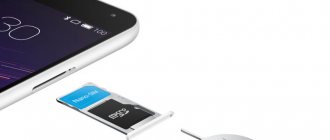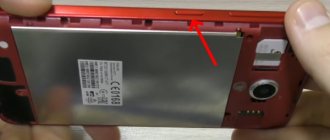The camera is a key component of the vast majority of flagship Android smartphones today. There is probably not a single manufacturer left that has not refocused on producing camera phones. As a result, 5-module imaging systems with incredible resolution, 3D sensors and lenses for all occasions have become the absolute norm. However, precisely because of the abundance of functional elements, ensuring the functionality of such cameras has become much more difficult than before. Don't believe me? Then, by the way, here is a good example for you.
Has your smartphone camera taken worse pictures? Perhaps the case is to blame
Why you shouldn't use old Android smartphones
Some time ago, owners of Huawei P40 and Huawei P40 Pro, considered the main camera phones on the market, began to complain en masse about the decrease in shooting quality. The reasons were voiced in a variety of ways, but the main one was considered by the majority to be problems in the software caused by one of the latest updates. Moreover, the failure was clearly of a software nature - the camera could not adjust the focus for a long time, and the pictures turned out blurry, regardless of the shooting mode used.
Firmware
Some gadget owners began to notice that after installing a new firmware version, the phone’s camera does not work as well as before: problems with focusing, resolution, etc. Indeed, updating the software can worsen the performance of the camera, because...
all manipulations in the device are transmitted and processed programmatically. Which is especially true for new smartphones. If it all boils down to the fact that the firmware is really at fault , try returning the previous version of the software or resetting the settings on the camera - and maybe on the phone itself. If the device’s warranty period has not expired, you can return it under warranty to a store or contact a service center.
So, if problems start after installing the latest firmware and you think this is the reason, you should follow these steps:
- return to the previous version with which there were no problems;
- perform a factory reset;
- wait for the next firmware version, which will not contain errors;
- contact the manufacturer.
A reliable way to solve the problem
The Mobilap Repair service center has all the necessary equipment to fix smartphone camera breakdowns of any complexity. A cloudy camera on a phone can cause a lot of trouble for the owner, because the quality of the photos suffers significantly. The problem must be solved quickly and effectively. In order not to waste time and money, immediately contact professional professionals with such a problem.
Within ten minutes, our company’s specialists will diagnose the device, based on which a rational repair method will be selected and agreed upon with the client. We offer all the conveniences: delivery by courier, our service center is located in the center of Moscow, and we have the most affordable prices for repairs. We will provide a warranty on the performance of the smartphone camera for up to 1 year.
The user's first actions if the camera does not take good pictures
Initially, the smartphone owner must determine the possible cause of the problem. If the breakdown makes itself felt immediately after updating the firmware, you need to reset the phone settings to factory settings, and also try to return the previous firmware. In most cases, the average user is unable to cope with the task on his own.
In this case, contacting a service center is the correct and only way to fix the problem. The camera on your phone becomes cloudy due to damage to the anti-reflective coating. This is a vulnerable spot that can easily be scratched.
The pictures will be cloudy for the following reasons:
- the lens is externally or internally dirty - in the first case, it is enough to wipe the camera element with a damp cloth, in the second - only disassemble the smartphone;
- The magnet of the protective case can also disrupt focusing;
- There was a problem with the device's software settings.
First, remove the cover. Take a couple of pictures, take a closer look to see if the defects have disappeared or not. Then wipe the camera lens with a napkin or slightly damp cloth. If after these steps the problem does not go away, set manual focus settings and update the operating system version.
What to do if your phone camera takes blurry photos?
Millions of photos are taken every day using smartphones. About 200 million to be exact. The phone camera has become a daily aid for every civilized person; manufacturing companies are doing everything possible to create more and more advanced cameras. As a result, phone cameras have become masterpieces of high technology.
However, even the camera of the best and most modern phone can at some point start taking blurry pictures where the image is completely out of focus. Of course, the owner of the phone panics at the first moment. First it tries to clean the lenses, then it restarts the camera app and finally it restarts the smartphone. What to do if these proven techniques don't help? Most likely, the owner of the phone sighs and wonders when he will have the opportunity to take the phone for repair.
Before you head to the repair shop, be sure to try another simple but surprisingly effective method: tap your finger on the camera lens. With moderate effort, not too vigorously. If this is not enough, then tap the smartphone camera on the soft part of your palm a couple of times with moderate force. It is highly likely that the camera will be able to focus again. If the pictures continue to turn out blurry, you will still have to take the device in for repair.
or Digitaat (“Digimage”) is a digital story writer. “The nickname suits my age, my long history of working with all sorts of digital things, and my desire and ability to write stories,” he grins. He believes that good technology should adapt to the person, and not vice versa, that is, intuitiveness comes first, be it the interface or design. Less is more - efficiency and economy must be taken into account both visually and functionally, that is, the mechanism/apparatus must be made to the maximum using a minimum resource. He also advises against improving what works. In his daily life, Digitaat cannot do without Wi-Fi and 4G mobile Internet, an iPhone smartphone and a digital camera. “Now this is the Sony RX100 II,” he lists useful and necessary technologies, “and although they don’t talk about the present in the past tense, for me the discovery of the digital world began from the moment I sold the HTC Desire HD and purchased my first Dell Streak smartphone 5 with a 5 inch screen. This was the moment when I moved from the so-called average consumer to the community of digital freaks. I am pleased to share any smart thought. Digital proficiency is a form of modern knowledge that many of my peers are trying to do without. And it’s always nice to help others.”
Avoid Zoom
Use physical zoom. How? It's very simple: if you need to zoom in on an object, walk up to it. That's all. As a last resort, if you cannot get close to the subject, you can simply crop (crop) the photo in the editor. Thus, you will achieve the same result without losing anything. And a photo taken with digital zoom will be ruined forever.
Use light correctly
This advice applies to all phone models: the subject should be facing the light source, but not the camera. The main problem with smartphone cameras is working with a small amount of light. Therefore, our main task is to give the camera the maximum amount of light. You may have to think a little about how to place the object, but you'll love the results.
Flash
Most photographers recommend turning off the flash on your smartphone altogether and using it only as a flashlight. However, in a situation where you need to take a photo in the dark, flash can still come in handy. Just put it in “Auto” mode and the smartphone will decide when to turn it on.
If a situation arises in which you doubt whether a flash is needed, then the best choice would be to take two photos: one with a flash, the other without, and then figure out which one turned out better.
Why does the camera take worse pictures with a case?
The cover prevents the matrix from correctly perceiving side light
However, it is difficult to call two smartphones a relevant sample. Another thing is that not only Huawei P40 and P40 Pro suffer from such problems, but also many other smartphones. The problem of low-quality images is most common among owners of devices with ToF sensors. Many manufacturers use them not only to build a virtual map of space, but also for focusing, and unofficial cases that do not take into account the design features of smartphones often either cover them completely or partially, which affects the final result.
Do you think differently? Try to argue with the participants in our Telegram chat.
However, a detailed study of the problem showed that sometimes even official cases, which are designed taking into account all the features of smartphones, interfere with photo and video shooting. AndroidInsider.ru editor-in-chief Renat Grishin, who uses the iPhone as his main smartphone, also notices this problem when using Apple's Smart Battery Case. Therefore, he says, if he needs to get a quality shot, he prefers to remove the case and shoot without it.
Reasons for the appearance of cloudy images
Blurry photos taken on an iPhone can upset even an optimist. No one expects the pictures to be of poor quality when purchasing a new device model from a given manufacturer. The causes of this defect are often related to incorrect autofocus operation.
The problem may occur with every snapshot or occur periodically. Autofocus controls both smartphone cameras. Among the reasons leading to autofocus problems are:
- dirty camera lens, small particles getting under the lens;
- autofocus captures the protruding edge of the case;
- the presence of a magnet on the case also leads to focusing failure;
- software settings are set incorrectly;
- failure due to mechanical shock or moisture.
Causes
They can be divided into 2 groups: hardware and software problems. The first includes contamination of the camera lens, damage to the anti-reflective coating, lenses, and matrix.
The second group of problems includes malfunctions after system updates, flashing, or accidental reset of camera application settings.
The lens is dirty or the anti-reflective coating is damaged
If the lens gets dirty, just clean it with a cotton pad.
These are the most common causes of cloudy photographs. Because of them, the light falls on the matrix distortedly and therefore the quality of the image suffers.
If the lens becomes dirty, simply clean it with a cotton pad and car windshield cleaner or window cleaner.
To make sure that the anti-reflective coating is damaged, you need to inspect the lens in a well-lit place - when tilted in different directions, it should glow dark blue or purple. In this case, scratches should not be noticeable.
If there are any, then you need to get rid of any remaining coating by cleaning it with a cotton pad soaked in 90% ethyl alcohol. The haze in the pictures will disappear.
Damaged lenses, matrix
Typically, these elements of the camera module are damaged by falls, moisture, or power surges.
Since this component is not repairable, it must be replaced yourself (the camera module in a smartphone is usually attached to the motherboard with a cable, and not soldered) or in a repair shop.
Crash after firmware update or flashing
Reset to factory settings
This problem occurs rarely and mainly after updates, as they usually contain many bugs. You can get rid of it by flashing it to a previous working firmware version or resetting the settings to factory settings. On smartphones with Android OS this is done like this:
- Make a backup copy of important files. For phones with Android0 and newer - unlink your Google account or remember your login and password. Otherwise, after completing the procedure, the device will not be unlocked.
- Go to “Settings” and go to the “Reset and Backup” section.
- Click on “Reset to factory settings”.
- Confirm the start of the procedure and wait for it to complete.
Self-resetting camera app settings
You can fix this by checking its settings and setting the necessary ones. If the settings are not saved after updating, then install a third-party application or a previous working version of the standard camera application. You can find it on the 4PDA forum.
To summarize, we can say that the main reason for cloudy pictures is the anti-reflective coating inadvertently torn off from the camera lens and contamination of the latter. The problem can be resolved extremely simply - just wipe the lens with an alcohol solution.
Similar articles
( 2 ratings, average 1 out of 5 )
Why the smartphone camera began to take poor pictures
Here's why you shouldn't use unofficial cases
Then the developers began to dig, but when they didn’t find any glitches in the smartphone’s firmware and found out that a manufacturing defect did not entail such a result, they decided that they were probably just looking in the wrong place. However, after conducting a lot of tests in laboratory conditions, Huawei engineers finally found the true reason for the low quality of the images. As it turned out, it was not caused by firmware failures or a manufacturing defect of the camera module, but by unofficial cases that users put on their devices.
Did you know? Samsung didn't want to buy Android and gave it to Google
To believe that this is really the case, frankly speaking, is not difficult, since Huawei did not make such a statement out of the blue. The company actually conducted a study of the cases that are on sale, studied their design and clearly showed what exactly causes the camera to malfunction. As you can see in the photographs below, some of the cases block the sensors responsible for shooting, which is why the camera cannot focus properly and produce high-quality results. Other cases do not cover the sensors at all, but leave too little room for them to operate stably and correctly.
Self-resetting Xiaomi camera app settings
You can fix this by checking its settings and setting the necessary ones. If the settings are not saved after updating, then install a third-party application or a previous working version of the standard camera application. You can find it on the 4PDA forum.
To summarize, we can say that the main reason for cloudy pictures on Xiaomi Redmi is the inadvertently torn off anti-reflective coating from the camera lens and contamination of the latter. The problem can be resolved extremely simply - just wipe the lens with an alcohol solution.











